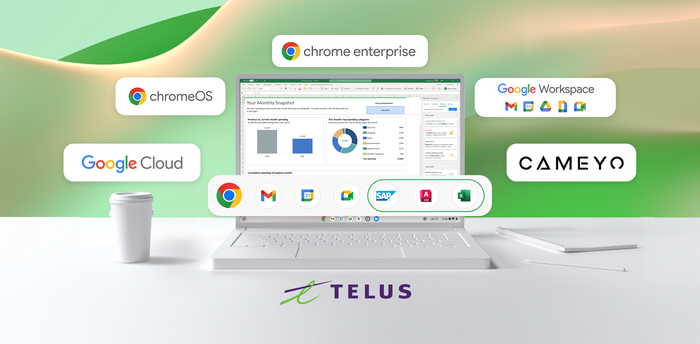IT set free to innovate with Chrome Enterprise

Kan Liu
Senior PM Director, Chrome OS
Editor’s note: Today’s post is by Kan Liu, a member of the original Chrome OS team more than 10 years ago and now the platform's Senior Director for product management.
In the past, businesses often thought of IT as a support function—in charge of tasks like imaging devices, setting up on-premise servers, and repairing devices after breakdowns. But as more enterprises migrate to the cloud and digitally transform, IT has become a change agent for the entire company. Today, IT helps employees work more creatively and collaboratively while improving company culture.
IT leaders and Chrome Enterprise customers tell us they are increasingly responsible for security measures, automating processes, reducing errors, and enabling AI—so much more than simply being a cost center. When IT is buried under administrative tasks like support tickets, security updates, or vendor negotiations, company velocity slows, and frustration builds. But when companies have technology that doesn’t get in the way of worker productivity, these teams have more capacity to work on dream projects and explore new technology.
We wanted to make computing easy for both users and IT, without sacrificing performance. We started by building a machine and operating system (Chrome OS) that could go from a closed laptop lid to the browser in as fast as six seconds, so users can quickly get to work and be productive. With auto-updates, multilayered security, and fast deployment, time savings turns into cost savings for businesses, and creates space for IT to generate innovative ideas—transforming IT into revenue generators instead of cost centers.
We see these changes happening across industries. SoulCycle rewrote the old IT model and innovated from every angle. As Derek McWilliams, Director of IT at SoulCycle, told us: “We wanted our technology to prepare for innovation in the future, find opportunities for new interactions and find a centralized suite to reduce overhead. Studio upgrades had to be updated within two to three hours without disrupting studio classes. We were easily able to send one IT team member to each location to upgrade devices at the studios to Pixelbooks.” IT innovation also helped foster culture change. As Derek explained, “Changing technology can be really intimidating for people who don’t live with it every day. It’s our job [as IT] to ensure that our employees feel good when they’re using technology.” Hear more here.
We wanted our technology to prepare for innovation in the future, find opportunities for new interactions and find a centralized suite to reduce overhead. Studio upgrades had to be updated within two to three hours without disrupting studio classes. We were easily able to send one IT team member to each location to upgrade devices at the studios to Pixelbooks.
Derek McWilliams, Director of IT at SoulCycle
Donna Chornawka, Managing Director of Team Member Collaboration and Enablement at ATB Financial, shared how ATB had a vision to transform the way employees work and how customers bank. Identifying the right technology, establishing an evangelist team, and focusing on support during the migration phase enabled culture change because of IT.
Dr. Agarwal’s Eye Hospital, a group of 70 eye-care hospitals across India and Africa, experienced the same shift in perception. CTO Dilip Ramadasan deployed Chromebooks to help doctors and administrative staff capture patient data and reduce IT help tickets: “We, as IT, are no longer the people who employees only contact when computers break down. Now we’re the team that helps to improve patient health.”
Local and state government IT leaders are also leading the charge in driving innovation. Mark Lumley, Assistant Director for digital and IT for Kingston and Sutton London Borough Councils in the UK, shared his perspective: “IT is more than wires and wifi. We need to focus on digital transformation to truly enable transformation. We’re putting ourselves into our users’ shoes to redesign the user journey to be as effective as possible—we’re trying to find their pinch points to use technology to solve those problems.”
When you start on your own digital transformation journey, consider what role you want your IT team and technology to play during your transition to the cloud. Free your team from the day-to-day administrative tasks and focus on achieving your organization’s vision.
To learn more about our campaign, IT Set Free, or how to empower your IT teams, visit the Chrome Enterprise website.



